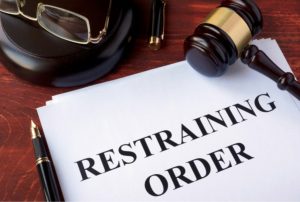
What Proof Do You Need for a Restraining Order? A Helpful Guide
Did you know that there are between two million to three million restraining orders issued per year? If you are wondering what proof do you need for a restraining order, you are in the right place. We have put together this guide with the key things to know about filing a restraining order.
Keep reading to learn all the ins and outs of getting a restraining order put in place.
What Is a Restraining Order?
A restraining order is an order from the court to protect someone from further harm from someone that is being hurt. It helps to keep the abuser away and it also keeps them from harassing you.
Keep in mind that a restraining order is a civil order and this does not give the abuser a criminal record.
Getting a Restraining Order
Any victim of domestic violence can obtain a restraining order against the person causing the violence. Domestic violence is when there have been one or more of the following acts committed:
- Assault
- Criminal sexual contact
- Burglary
- Criminal restraint
- False imprisonment
- Harassment
- Kidnapping
- Homicide
- Sexual assault
- Stalking
- Lewdness
In any of the domestic violence examples above the judge will sign an order of protection that demands the abuser to obey the orders appointed by the court. It will have specific orders on what the abuser can and can’t do.
Restraining Order Demands
One of the demands that the restraining order can make is for the abuser to not have any contact with you either by phone, at home, at work, in your home, or anywhere that you are. The order might also protect other people in your family if the judge finds it necessary such as underage children.
A restraining order can order the abuser to pay any costs from the abuse. For example, moving expenses, loss of earnings, bills that are due immediately, medical treatment, etc. Sometimes the judge might also make the abuser pay the attorney fees and all the damages that the abuser caused by their actions.
A judge might have the police escort the abuser to remove their items from the home or a business that is shared by the abuser and victim to avoid unnecessary contact with the victim. Even if the place of residence is in the abuser’s name the court can order the abuser to leave the home or apartment and find a new place to live.
The judge has the right to make any decisions to protect and help the victim from further abuse and pain.
What Proof Do You Need for a Restraining Order?
The best way to have evidence that you need a restraining order is by keeping a recorded log of abusive incidents or of threatening behavior. If you are ever physically hurt go to the doctor and contact the police. This will give you a record from the hospital and the police that you were hurt by the abuser.
If you receive any threatening texts, emails, voicemails from the abuser this can be used as proof as well. Having an organized log will help you when you are filing for a restraining order.
It is also a great idea to consult a professional that specialized in this area of the law. Attorneys like https://injunctionattorneys.com/ will help you navigate the system and will help you file a restraining order to keep you safe if you are too confused or overwhelmed on what steps to take.
One of the main things to remember is that you want to do this as soon as the first incident occurs. Many people make the mistake of waiting because they are hoping that it does not happen again and they can sweep everything under the rug. Unfortunately, once the abuse begins it can easily happen again and it typically occurs multiple times after the first time.
Not waiting and taking action after the first sign of abuse will help you when you are filing for a restraining order.
Different Types of Restraining Orders
It is good to understand that there are different types of restraining orders. There are some orders that will prohibit the abuser from coming with a certain amount of feet from the victim.
Other orders might keep the abuser from contacting the victim through any means (phone, text, social media, email, etc.). Once a judge approves a restraining order it has to be followed very carefully because if it is violated it can lead to fines or even jail time.
Disobeying a restraining order can influence future legal proceedings such as child support, child custody, or alimony. Both the victim and the abuser have to make sure that the restraining order is followed. As the victim, do not allow the abuser to make their way back into your life and allow them to disobey the order.
If you allow the abuser to disobey the restraining order the judge can hold this against you if there is another incident of abuse.
Now You Can Stay Safe
Now that you know more about restraining orders and the answer to the question “what proof do you need for a restraining order?” you can make informed decisions on the next steps to take.
The best thing you can do is consult an attorney to help you build a compelling restraining order application to ensure that you and your family are protected as soon as possible.
Did our blog post help you today? Please come back soon to never miss our latest posts.


